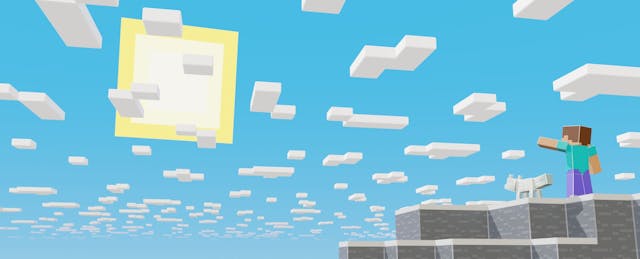Veteran technology teacher Ben Kelly is thankful that, after 18 years of teaching, his students still run into the room when it’s time for his class. But he cautions not to give too much credit to the technology itself. His 250 middle and high school students in the rural Caledonia Regional School in Moncton, New Brunswick, are using computers that are older than the students themselves. Instead, Kelly gives credit to a curriculum that engages their creativity and speaks to their interests.
Kelly, a two-time recipient of the Canadian Prime Minister’s Award for Teaching Excellence in STEM, believes that mission- and game-based learning are ideal for captivating students across the curriculum, not just in technology class. And he should know. As a specialist in a small school, Kelly has been called upon to teach a wide range of classes—by his estimation, roughly 75 distinct classes—during his tenure.
EdSurge was fortunate enough to sit down with Kelly to discuss the merits of game-based learning and how it can connect students with real-world experiences in relatable ways.
EdSurge: You talk a lot about mission-based learning. Why is that meaningful to you?
Kelly: I started teaching 18 years ago, after working at a summer camp in the Catskill Mountains of New York. They didn't want me to stand on the sidelines and watch. They wanted me to get in there with the kids. And this mindset has carried into my teaching practice. I'm not the type of person who likes to assign something and then mill about the room. I dive in with the kids.
I find that it builds relationships a lot faster when you're in the trenches with the kids during each lesson. I use mission-based learning; it’s all about the story. I come in and set the stage, even if it's throwing an egg off the 40-foot roof of the school. It's not an egg anymore; it's an astronaut. And if it doesn't survive the fall, you have to write to the parents and take full responsibility for your space program not working, right?
So everything becomes a mission, and everything's all about the mission. And it's usually tied into a real-life scenario—either local news or a global event.
Your curriculum uses popular games like Minecraft and Fortnite. How did you start incorporating video games into your class?
When Minecraft came out, it was relatively early in my career. All the kids were coming to school saying, "You got to see this game!" I had caught glimpses of it, but it seemed like this weird thing that made no sense. I kept looking at it, thinking, "No, this is a little too weird."
Then, finally, one of the kids came in at lunch and said, "Mr. Kelly, I really think we could use this in school." I had never thought about that. So, I looked into it and realized, "Well yeah, you can design things and prototype buildings and things like that."
One early project really stands out. We did a war memorial on Minecraft where the students found the names of 3,279 fallen soldiers from World War I, and they made signs around a giant poppy for every single soldier. They had 3,279 signs around this giant poppy, and each sign had the name of a soldier who had lost their life in the four-day Battle of Vimy Ridge. I thought, "Oh, my goodness, this is quite the project." The kids just loved it.
Tell us about STEMpathy. How do you use it in your classroom?
I wanted the students to not just think about themselves. When we did a tech project or a science project, we could shift the focus. It became, "Let’s help someone. Let's make this mission, science project or tech project about someone else." I started to realize that there's a wealth of empathy-type lessons that you can create, where you're still accomplishing the mission, but at the same time, for one hour a day, you're not thinking about yourself; it's all about someone else.
Epic Games hired me to make some sustainable development lessons for their Fortnite creative platform. They're pretty cool. As one example, we started retrofitting buildings in Fortnite. When my dad went into a wheelchair, we had to cut the side of our veranda off and build a ramp—retrofitting a current property to make it more accessible. So, we created a lesson about retrofitting properties for those who need them.
Another is hurricane related. There are millions of people who live on the coast. With the rising seas, how can we start to retrofit, rebuild or make new buildings that survive? Because the seas are going to rise.
The kids started to look at buildings, like hotels and stores, and they made the ground floor a wet zone, meaning everything that's on the ground floor is designed to be okay if waves do come. Everything is designed to handle that brief rise in the sea. And then, they added walls that deflect the waves back into the sea.
How has the use of games in your classroom impacted students who might not have already considered themselves gamers?
We're doing business and enterprise units where students plan concerts or events. I gave them a few different options for what type of events they could plan. And one of them was esports—video game competitions.
I have a grade 10 girl who, in four years in my classroom, might have said something like 12 words to me. She’s super quiet but has friends all around her. Her friends were begging her, "Please come work with us. We have this great idea for a concert. We need you." And this girl confidently just said, "Nope. Give me a controller.” And she dove in to figure it out. She somehow found the strength to tell her friends, "No, this is where I'd like to go with this. I'd like to find out more.” She decided to go it alone with esports event planning. And she discovered that she's a gamer.



